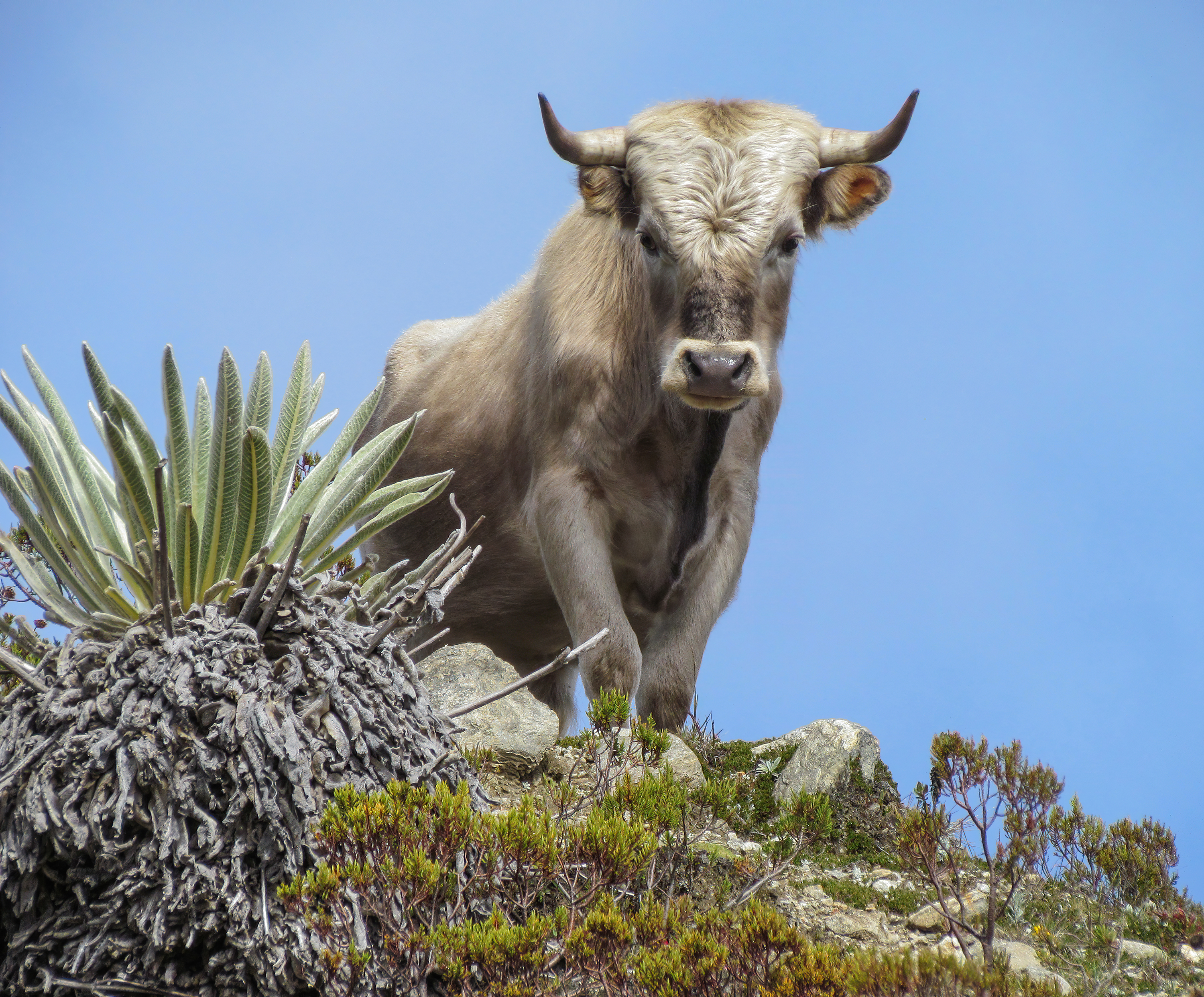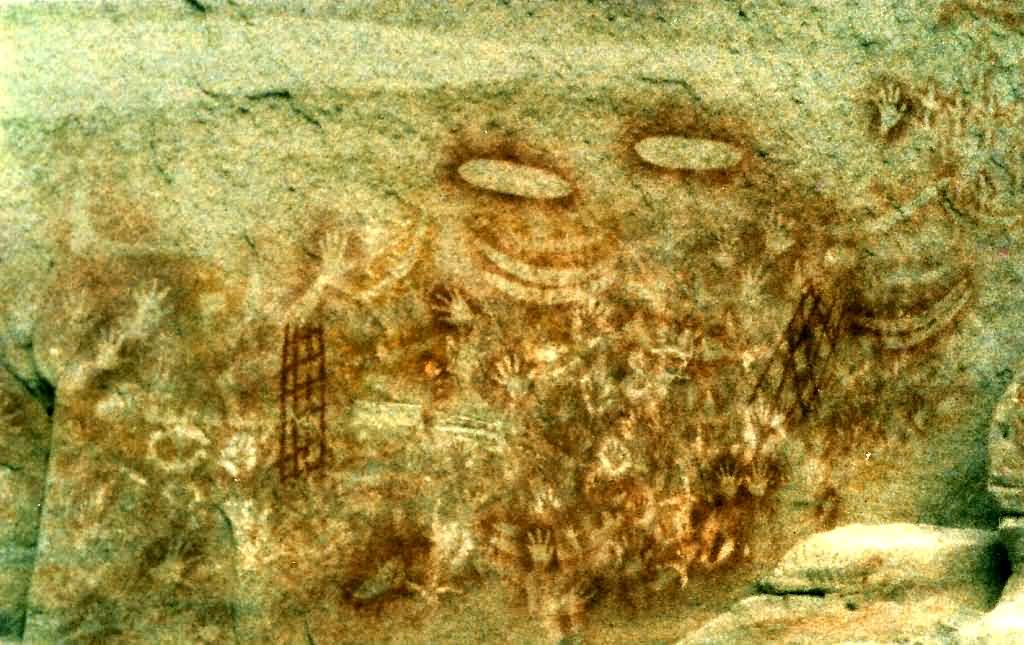|
Watarru Indigenous Protected Area
The Watarru Indigenous Protected Area is an Indigenous Protected Area in the north west corner of South Australia. It covers an area of in the Great Victoria Desert. It is the traditional land of the Pitjantjatjara, Ngaanyatjarra and Yankunytjatjara peoples. The area was made an Indigenous Protected Area in June 2000. It is managed by the Watarru community according to their traditional laws and practices, known as Tjukurpa. The environment has not been damaged by cattle grazing or other farming practices. The Anangu are working with scientists to develop ways of dealing with feral animals including cats, foxes and camels. It is classified as an IUCN Category II protected area. See also * Protected areas of Australia Protection is any measure taken to guard a thing against damage caused by outside forces. Protection can be provided to physical objects, including organisms, to systems, and to intangible things like civil and political rights. Although th ... Refer ... [...More Info...] [...Related Items...] OR: [Wikipedia] [Google] [Baidu] |
Watarru, South Australia
Watarru Community is an Aboriginal Australians, Aboriginal community in the Anangu Pitjantjatjara Yankunytjatjara (APY) lands in South Australia (one of a number of communities or Outstation (Aboriginal community), homelands on "The Lands"; others include Amata, South Australia, Amata, Ernabella/Pukatja, Kaltjiti, South Australia, Fregon/Kaltjiti, South Australia, Kaltjiti, Indulkana, South Australia, Indulkana, Kalka, South Australia, Kalka and Mimili, South Australia, Mimili). Watarru Community sits at the foot of Mount Lindsay and the community has at times been known as "Mount Lindsay". Time zone Due to its links with the Northern Territory and proximity to the border, the Aṉangu Pitjantjatjara Yankunytjatjara, APY Lands do not observe daylight savings unlike the rest of South Australia. The time zone observed throughout the year is Australian Central Standard Time (UTC+9:30), in line with Darwin, Northern Territory, Darwin rather than Adelaide. Geography Watarru Communi ... [...More Info...] [...Related Items...] OR: [Wikipedia] [Google] [Baidu] |
Camel
A camel (from: la, camelus and grc-gre, κάμηλος (''kamēlos'') from Hebrew or Phoenician: גָמָל ''gāmāl''.) is an even-toed ungulate in the genus ''Camelus'' that bears distinctive fatty deposits known as "humps" on its back. Camels have long been domesticated and, as livestock, they provide food (milk and meat) and textiles (fiber and felt from hair). Camels are working animals especially suited to their desert habitat and are a vital means of transport for passengers and cargo. There are three surviving species of camel. The one-humped dromedary makes up 94% of the world's camel population, and the two-humped Bactrian camel makes up 6%. The Wild Bactrian camel is a separate species and is now critically endangered. The word ''camel'' is also used informally in a wider sense, where the more correct term is "camelid", to include all seven species of the family Camelidae: the true camels (the above three species), along with the "New World" camelids: the llama, ... [...More Info...] [...Related Items...] OR: [Wikipedia] [Google] [Baidu] |
Protected Areas Established In 2000
Protection is any measure taken to guard a thing against damage caused by outside forces. Protection can be provided to physical objects, including organisms, to systems, and to intangible things like civil and political rights. Although the mechanisms for providing protection vary widely, the basic meaning of the term remains the same. This is illustrated by an explanation found in a manual on electrical wiring: Some kind of protection is a characteristic of all life, as living things have evolved at least some protective mechanisms to counter damaging environmental phenomena, such as ultraviolet light. Biological membranes such as bark on trees and skin on animals offer protection from various threats, with skin playing a key role in protecting organisms against pathogens and excessive water loss. Additional structures like scales and hair offer further protection from the elements and from predators, with some animals having features such as spines or camouflage servin ... [...More Info...] [...Related Items...] OR: [Wikipedia] [Google] [Baidu] |
Indigenous Protected Areas In South Australia
Indigenous may refer to: *Indigenous peoples *Indigenous (ecology), presence in a region as the result of only natural processes, with no human intervention *Indigenous (band), an American blues-rock band *Indigenous (horse), a Hong Kong racehorse * ''Indigenous'' (film), Australian, 2016 See also *Disappeared indigenous women *Indigenous Australians *Indigenous language *Indigenous religion *Indigenous peoples in Canada In Canada, Indigenous groups comprise the First Nations, Inuit and Métis. Although ''Indian'' is a term still commonly used in legal documents, the descriptors ''Indian'' and ''Eskimo'' have fallen into disuse in Canada, and most consider them ... * Native (other) * * {{disambiguation ... [...More Info...] [...Related Items...] OR: [Wikipedia] [Google] [Baidu] |
Protected Areas Of Australia
Protection is any measure taken to guard a thing against damage caused by outside forces. Protection can be provided to physical objects, including organisms, to systems, and to intangible things like civil and political rights. Although the mechanisms for providing protection vary widely, the basic meaning of the term remains the same. This is illustrated by an explanation found in a manual on electrical wiring: Some kind of protection is a characteristic of all life, as living things have evolved at least some protective mechanisms to counter damaging environmental phenomena, such as ultraviolet light. Biological membranes such as bark on trees and skin on animals offer protection from various threats, with skin playing a key role in protecting organisms against pathogens and excessive water loss. Additional structures like scales and hair offer further protection from the elements and from predators, with some animals having features such as spines or camouflage servin ... [...More Info...] [...Related Items...] OR: [Wikipedia] [Google] [Baidu] |
IUCN Protected Area Categories
IUCN protected area categories, or IUCN protected area management categories, are categories used to classify protected areas in a system developed by the International Union for Conservation of Nature (IUCN). The enlisting of such areas is part of a strategy being used toward the conservation of the world's natural environment and biodiversity. The IUCN has developed the protected area management categories system to define, record and classify the wide variety of specific aims and concerns when categorising protected areas and their objectives. This categorisation method is recognised on a global scale by national governments and international bodies such as the United Nations and the Convention on Biological Diversity. Categories Category Ia – strict nature reserve A strict nature reserve (IUCN Category Ia) is an area which is protected from all but light human use in order to protect its biodiversity and also possibly its geological/geomorphical features. These areas ... [...More Info...] [...Related Items...] OR: [Wikipedia] [Google] [Baidu] |
International Union For Conservation Of Nature
The International Union for Conservation of Nature (IUCN; officially International Union for Conservation of Nature and Natural Resources) is an international organization working in the field of nature conservation and sustainable use of natural resources. It is involved in data gathering and analysis, research, field projects, advocacy, and education. IUCN's mission is to "influence, encourage and assist societies throughout the world to conserve nature and to ensure that any use of natural resources is equitable and ecologically sustainable". Over the past decades, IUCN has widened its focus beyond conservation ecology and now incorporates issues related to sustainable development in its projects. IUCN does not itself aim to mobilize the public in support of nature conservation. It tries to influence the actions of governments, business and other stakeholders by providing information and advice and through building partnerships. The organization is best known to the wider pu ... [...More Info...] [...Related Items...] OR: [Wikipedia] [Google] [Baidu] |
Feral Animal
A feral () animal or plant is one that lives in the wild but is descended from domesticated individuals. As with an introduced species, the introduction of feral animals or plants to non-native regions may disrupt ecosystems and has, in some cases, contributed to extinction of indigenous species. The removal of feral species is a major focus of island restoration. Animals A feral animal is one that has escaped from a domestic or captive status and is living more or less as a wild animal, or one that is descended from such animals. Other definitions include animals that have changed from being domesticated to being wild, natural, or untamed. Some common examples of animals with feral populations are horses, dogs, goats, cats, rabbits, camels, and pigs. Zoologists generally exclude from the feral category animals that were genuinely wild before they escaped from captivity: neither lions escaped from a zoo nor the white-tailed eagles re-introduced to the UK are regarded as fera ... [...More Info...] [...Related Items...] OR: [Wikipedia] [Google] [Baidu] |
Indigenous Protected Area
An Indigenous Protected Area (IPA) is a class of protected area used in Australia; each is formed by voluntary agreement with Indigenous Australians, and declared by Aboriginal Australians and Torres Strait Islander representative organisations. Each is formally recognised by the Australian Government as being part of its National Reserve System. The areas may comprise land and sea, and are managed by Indigenous groups for the conservation of biodiversity. Managing IPAs also helps to protect the cultural values of their country for future generations, and has benefits for Indigenous health, education, economic and social cohesion. Text may have been copied from this source, which is available under Attribution 3.0 Australia (CC BY 3.0 AU)licence. As of 2020, there were 78 IPAs, covering around 46.53% of the National Reserve system. In September 2021, a further seven IPAs were declared, which will lead to IPAs comprising more than half of Australia's National Reserve System. ... [...More Info...] [...Related Items...] OR: [Wikipedia] [Google] [Baidu] |
Tjukurpa
The Dreaming, also referred to as Dreamtime, is a term devised by early anthropologists to refer to a religio-cultural worldview attributed to Australian Aboriginal beliefs. It was originally used by Francis Gillen, quickly adopted by his colleague Baldwin Spencer and thereafter popularised by A. P. Elkin, who, however, later revised his views. The Dreaming is used to represent Aboriginal concepts of ''Everywhen'', during which the land was inhabited by ancestral figures, often of heroic proportions or with supernatural abilities. These figures were often distinct from gods, as they did not control the material world and were not worshipped but only revered. The concept of the Dreamtime has subsequently become widely adopted beyond its original Australian context and is now part of global popular culture. The term is based on a rendition of the Arandic word ''alcheringa'', used by the Aranda (Arunta, Arrernte) people of Central Australia, although it has been argued tha ... [...More Info...] [...Related Items...] OR: [Wikipedia] [Google] [Baidu] |
Watarru
Watarru Community is an Aboriginal community in the Anangu Pitjantjatjara Yankunytjatjara (APY) lands in South Australia (one of a number of communities or homelands on "The Lands"; others include Amata, Ernabella/ Pukatja, Fregon/ Kaltjiti, Indulkana, Kalka and Mimili). Watarru Community sits at the foot of Mount Lindsay and the community has at times been known as "Mount Lindsay". Time zone Due to its links with the Northern Territory and proximity to the border, the APY Lands do not observe daylight savings unlike the rest of South Australia. The time zone observed throughout the year is Australian Central Standard Time ( UTC+9:30), in line with Darwin rather than Adelaide. Geography Watarru Community is situated approximately 550 kilometres south-west of Alice Springs. Watarru is situated at the foot of Mount Lindsay, in the Great Victoria Desert. Watarru Community is situated within the Watarru Indigenous Protected Area, which as of June 2001 was the largest s ... [...More Info...] [...Related Items...] OR: [Wikipedia] [Google] [Baidu] |



